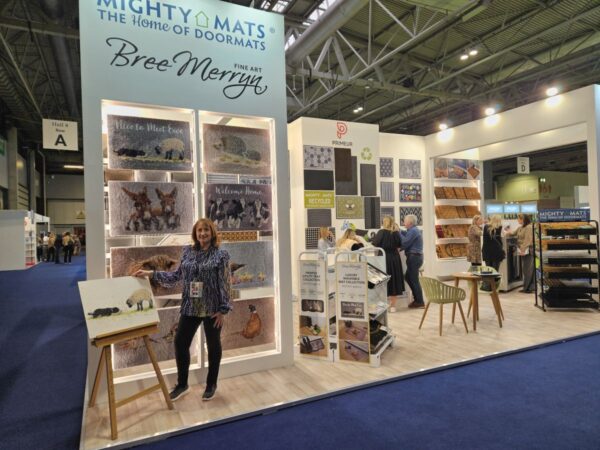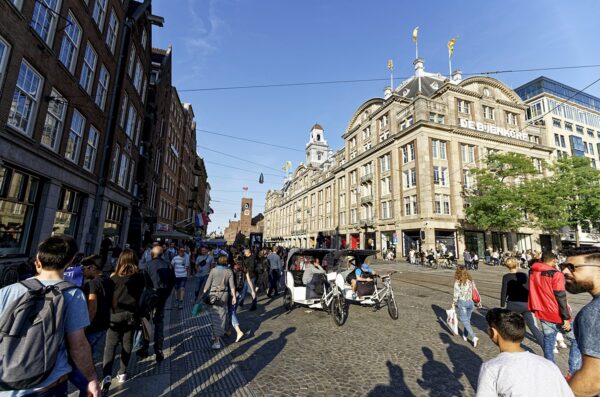 Alan Monahan writes: The big gift and home shows in Birmingham and Frankfurt have come and gone and new stock has been ordered. Some suppliers declared that they’d written healthy orders, while others grumbled that “things aren’t what they used to be”. Plus ca change.
Alan Monahan writes: The big gift and home shows in Birmingham and Frankfurt have come and gone and new stock has been ordered. Some suppliers declared that they’d written healthy orders, while others grumbled that “things aren’t what they used to be”. Plus ca change.
Talking to exhibitors at Spring Fair (pictured left) most reported that retailers had accepted that price rises were inevitable because of the falling pound, which has lost a fifth of its value since the EU referendum.
However, a major importer, who brings in product from all over the world, told me that one buyer had complained loudly that he was being asked to pay more. “I asked him if he wanted to put me out of business as I was already absorbing much of the increased cost on products,” said the supplier.
A survey by the British Chambers of Commerce confirmed that domestic sales margins are being squeezed and the cost base of UK businesses increased as a result of the fall in sterling. Nearly a half of the 1,500 businesses questioned said they had experienced a negative impact, while 54% of companies expect to have to increase the prices of their products and services over the next 12 months.
I certainly didn’t hear talk of “record orders” at the NEC and suspect that the trend will be for retailers to proceed with caution and buy little and often.
The BDO High Street Sales Tracker suggests that total like-for-like sales were down by -0.1% in January, the worst result for four years. However, the modest decline was coming off a positive base of +1.4% for the same month last year so should be kept in perspective.
Homeware and lifestyle sales were both positive last month, but the real success story for January was online sales, which reached a two-year high as poor weather saw shoppers taking advantage of discounting remotely.
The fall in sales in January coincides with a report from the Resolution Foundation think tank that a “mini-boom” in living standards between 2014 and the beginning of 2016 has ended. The boom was fuelled by subdued inflation, rising wages and employment.
Indeed, the Office for National Statistics said that Consumer Price Inflation rose to 1.6% in December, up from 1.2% in November, with higher costs for imported materials and fuels pushing up producer prices and eating into profits.
Waking up to the working week, I was greeted by the front page headline in The Times, which proclaimed ‘High street revolt over rates rise.’ Apparently, companies including the owners of Pizza Express, Greene King, Wagamama, All Bar One and Slug & Lettuce have written to the chancellor, Philip Hammond, to ask him to rethink a plan under which some outlets will be hit with a 42% increase in their rates from April.
Tory MPs are said to be worried about closures on high streets in their constituencies, although I haven’t personally heard many of them complaining! Rates will fall for 920,000 businesses, stay the same for another 420,000, and rise for 510,000.
The same paper reported that the British Retail Consortium (BRC) and the chief executives of leading retailers – including the John Lewis Partnership, Amazon, Asos and Kingfisher – will meet business secretary Greg Clark next Wednesday to try to persuade the government to include retail in its new industrial strategy.
This follows the prime minister’s naming of five sectors that would receive government support – life sciences, low-carbon emission vehicles, industrial digitalisation, the creative sector and the nuclear industry.
The BRC and the bosses are said to be pressing for a deal with Mr Clark that will address the need for advancing digital skills that can respond to the rapidly changing world of retail. The government surely owes our sector that. Some 100,000 people are employed in retail jobs that didn’t exist five years ago and, despite its problems, employee productivity in retail is increasing six times faster than the UK as a whole.
In an open letter to the chancellor, Helen Dickinson, chief executive of the BRC, says it expects retail to continue outpacing the UK average as the structure of the industry changes. But it will take investment in people and in technology to get there.
“The retail industry is driving productivity growth through investment in innovation,” she wrote, adding that in 2015, retailers invested £3bn in intellectual property products and a further £900m in ICT. And all this against a challenging backdrop of subdued sales growth, fierce competition and declining profitability.
 The UK’s exit from the EU will bring further change. But Dickinson believes there are reasons to be optimistic about trade and retail in a post-Brexit world and that a fair deal for consumers and an orderly deal for business are possible.
The UK’s exit from the EU will bring further change. But Dickinson believes there are reasons to be optimistic about trade and retail in a post-Brexit world and that a fair deal for consumers and an orderly deal for business are possible.
She says that retailers want to continue their contribution locally and ensure they play their role in underpinning vibrant communities – and rightly reminds the chancellor that “continued reform of business rates will help retailers stay anchored in towns and cities, providing jobs and stability for local people”. And so say all of us!
May the retail gods be with you.
Email Alan: ajmonahan@aol.com
















